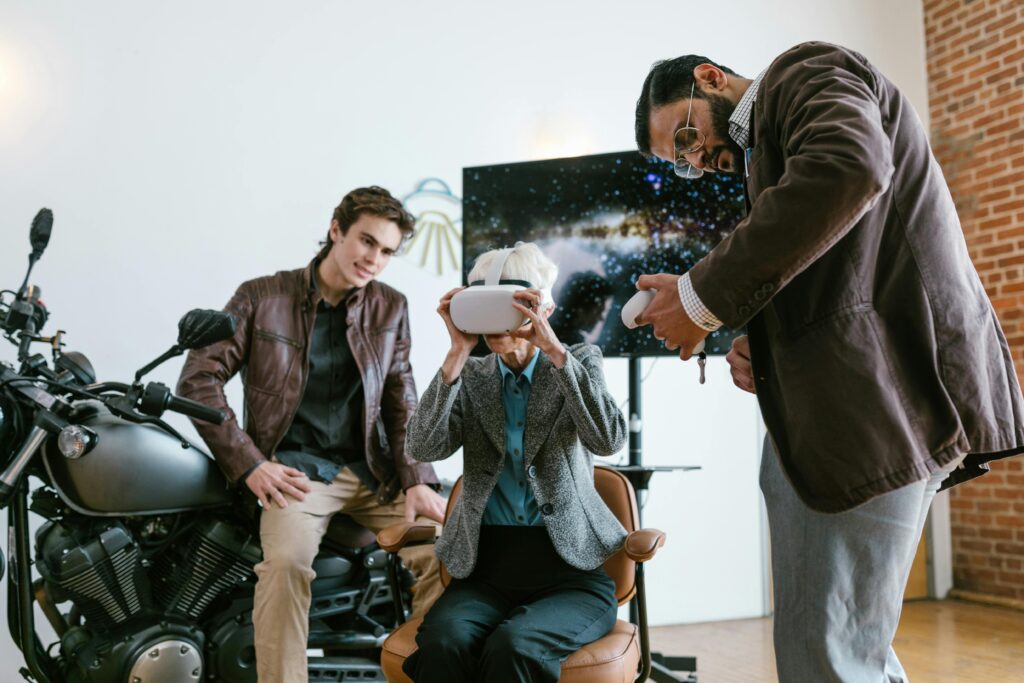In today’s digital world, the world of marketing is changing rapidly. Augmented reality marketing is one of the most exciting developments in the world. It bridges the gap between the real and virtual worlds. It allows customers to feel interactive experiences, leading to increased engagement and conversion rates.
How Brands Use Augmented Reality in Marketing
Augmented reality uses mobile devices or AR glasses to blend digital elements into the real world. This allows brands to display their products in the user’s surroundings. It helps provide you with an interactive, personalized, and memorable experience.
The Expansion of the AR Industry
In today’s time, the AR (Augmented Reality) industry is growing rapidly. According to Statista, over 1.7 billion AR devices will be active by 2025. This rapid growth is driven by sectors like fashion, e-commerce, and real estate, where immersive technology is already playing a significant role.
AR Marketing Strategies that Work
Virtual Try-Ons & Product Demos
Many brands use AR to let customers view furniture or eyewear in real time. As a result, it builds greater customer trust.
Interactive Ads through AR Filters
Instagram, Snapchat, and many other such platforms offer AR filters that allow users to interact with branded content, making the experience more entertaining and shareable.
Location-Based AR Campaigns
By using GPS and AR, you can deliver geo-targeted content or offers in your business.
Virtual Reality Advertising: As the Next Big Leap
This advertising technique provides a fully immersive brand experience through VR headsets. From interactive showrooms to custom gaming environments, it enables storytelling that creates a deep and long-lasting impact on the audience.
Managing Augmented Reality Marketing Campaigns Effectively
Using an Excel sheet to track and manage your campaign is extremely important. Here are some ideas to help you get started:
| Campaign Name | Platform Used | Launch Date | Engagement Rate | Budget Spent | ROI (%) |
|---|---|---|---|---|---|
| Geo AR Promo | Custom App | 10-Jun-25 | 82% | ₹25,000 | 310% |
| Virtual Try-On | Instagram AR | 01-Jun-25 | 68% | ₹15,000 | 220% |
It helps analyze performance and plan future interactive marketing strategies.
Benefits of Augmented Reality Marketing
- Improved Conversion Rates: Virtual demos lead to faster purchase decisions.
- Higher Engagement: AR content captures more attention than static ads.
- Competitive Edge: Early adopters of augmented reality marketing stand out in crowded markets.
- Customer Retention: Personalized AR experiences create stronger brand recall.
FAQs About Augmented Reality Marketing
A: In any business, AR (Augmented Reality) and VR (Virtual Reality) are technologies that enhance customer experiences by combining digital content with real or virtual environments.
A: In businesses, VR is used for virtual product demonstrations, immersive training, virtual tours, remote collaboration, and enhanced customer engagement through interactive experiences.
A: Brands use VR in marketing to create immersive experiences like virtual showrooms, interactive product demos, branded games, and 360° storytelling that deeply engage customers.
Connect with us
Conclusion
This is not just a trend, but a transformation for businesses. With the growing demand for unique, technology-driven experiences, brands that are investing in immersive technology now will be gaining significant benefits in the future of marketing. From interactive advertisements to virtual storytelling, these tools are changing the way we connect with our audience.
👉 Need expert social media marketing help? Contact Trandify Solutions!

